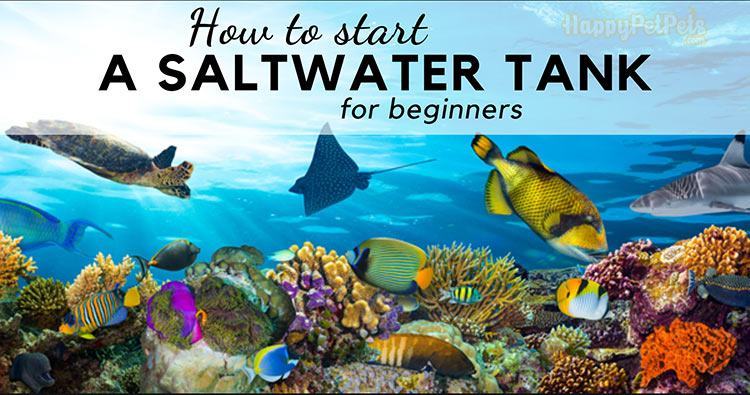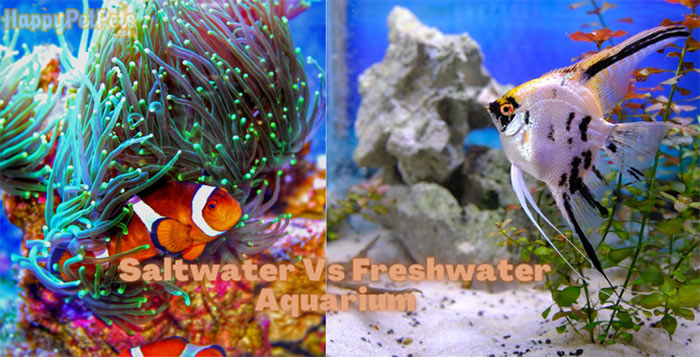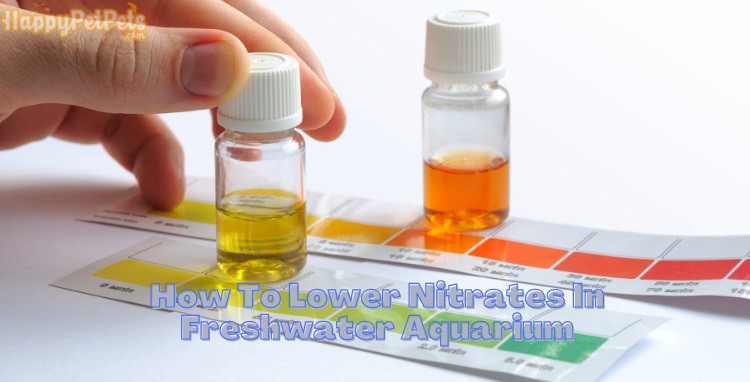Has your heart fallen for a marine fish family? Prepare a saltwater aquarium is probably an excellent idea for you to welcome a brand new type of fish to your house. Unlike freshwater fish tanks, a saltwater aquarium basics will have some different features that you need to pay more attention to it.
Do you want to know how to start a saltwater tank, which kind of saltwater fish will suitable for beginners, how to maintain a salt water fish tank, or how to make the best things for a marine tank in the easiest way? Just read the following guide.
How to Start a Saltwater Tank
Via YouTube.com/ How to maintain and care for saltwater aquarium
Preparation With Saltwater Tank Setup Checklist
01. A saltwater aquarium
You can go with any sizes (should begin from 30 gallons and above), and any types of fish tanks to make it for a marine aquarium. Actually, the bigger the tank is, the easier the maintenance. Choose a short but wide tank is great for both maintaining and raising tasks.
02. The tank substrate
Grain substrate is one of the best materials for a saltwater fish tank. You should choose a fine grain or medium grain of sand, crushed coral, especially aragonite to make an at least 1-2 inches bed for the fish.

Different color sand substrate for the saltwater tank
03. Live rock for saltwater
Both shopping online and purchase in person is available. Better you should choose live rock yourself to find a rock that has high quality (no decay, no pest, has great coralline growth). It needs to suitable for your salt water aquarium decorations later.
04. Prepare salt water mix
You can choose any brands for the salt mix. Just make sure you follow the instruction: add the salt to a water vessel, mix well with the given proportion before pouring them into the fish tank.
05. Hydrometer or refractometer
These tools are used to make a salinity measurement for your aquarium water, but a refractometer is more accuracy compares to a hydrometer, so you can choose which equipment you already had or buy a new one.
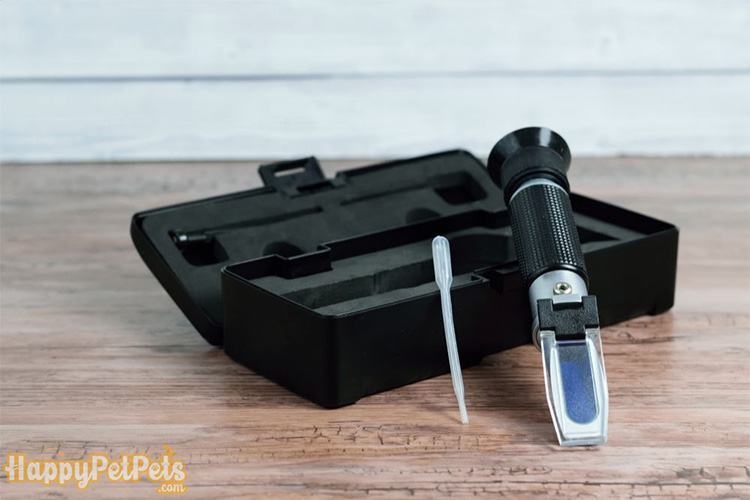
A handheld refractometer for saltwater aquarium
06. Get a protein skimmer
A protein skimmer will support you to remove organic compounds like fish waste or uneaten food, which means lower salt water aquarium water change frequency for the tank. You can choose hanger skimmer (for none sumps), in-tank type or in-sump one to cooperate with the salt water aquarium sumps.
07. A salt water aquarium pump
You should use salt water aquarium pumps (or powerheads) to duplicate the water movement in the tank to make sure its flow can get through any parts of the tank. It is also necessary for a nano reef tank setup.
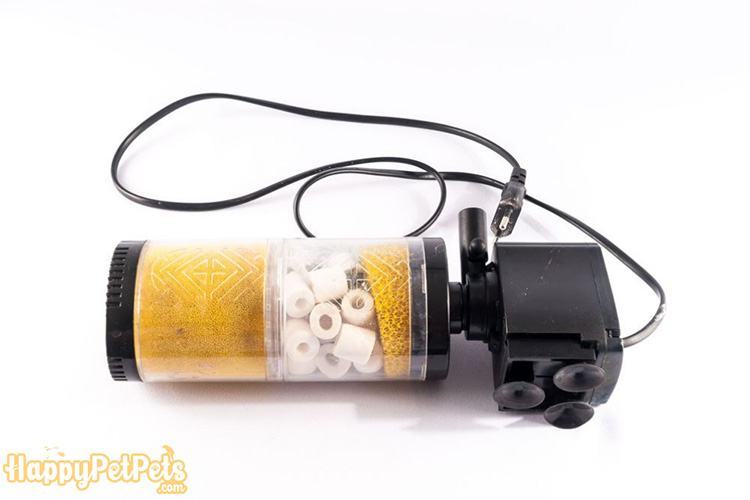
A classic saltwater aquarium pump to increase the water movement
08. A suitable filter
The best filter for a saltwater aquarium is a biological filter (with live rocks), sump filter (the best but more expensive than others), canister filter (multi-purpose but need cleaning more frequently), and fluidized bed filter (using sand, push the good bacteria growth). You can choose any one of these, and two if you have a large saltwater fish tank.
09. Salt water aquarium heaters and a thermometer
To reduce the risk, you can use two small salt water aquarium heaters instead of one heater with high performance, which is good for the case whether you find out the heater may break. Choose the best aquarium heaters for your tank based on the functions, types, and your fish living conditions.
10. Ammonia test kits

Prepare an ammonia test kit to check the saltwater tank quality
The saltwater aquarium starter kits should include an ammonia test kit for checking the ammonia, pH, nitrite and nitrates level in the saltwater tank. These test kits are available in any pet store.
11. Salt water fish tank lighting
The saltwater tank will need lighting to provide a good living condition for marine animals. You can use fluorescent lights to do this or a salt water fish tank lighting with LED lights to reduce the cost with less electric consumption.
12. Salt water aquarium sumps
As you can see above, salt water aquarium sumps can be a good place to put a protein skimmer, or turn into a water filter and provide more water for the tank. It is an optional choice and higher cost, so you can consider having a sump for better saltwater tank quality.
Choose the Right Salt Water Fish for Beginners
You shouldn’t buy the fish before preparing a perfect tank, but give the first thought about what you will raise in the upcoming saltwater tank will make things easier.

Colorful fish swimming in a saltwater aquarium
(+) As a beginner, you can choose fish that are:
- Lusty and tranquil
- Acclimate for environment changes
- Unaggressive
- Maybe have a lively and entertaining look
- Not getting extra big or expensive
Suggestion: Clownfish, Blenny fish, Dummy fish, Firefish and Mollies, etc.If you are in love with the dummies, this saltwater tank setup for dummies can help you more.
(-) Saltwater fish for beginners to avoid:
- Tangs: Susceptible to ich, parasite and other problem when stress
- Seahorse: Need low-level water and grass, more water changing
- Damsel: Quite aggressive, like to attach even bigger fish
- Pipefish: Require live food, shallow water, and a specific tank
- Mandarin dragonet: Easily to stress and die because of starving
Set Up a Saltwater Aquarium
Step 1: Imagine the whole picture of a saltwater tank
Before getting a preparation or setting up the tank, you should carefully think about how the tank will be:
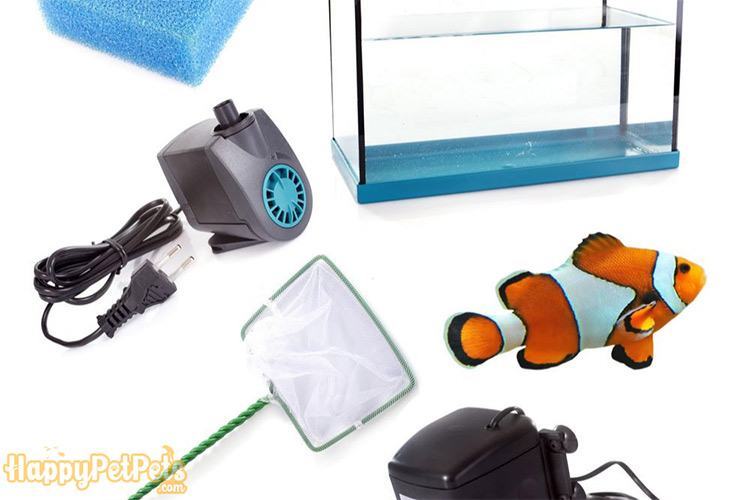
Prepare the needed equipment to set up a new saltwater aquarium
- Choose the saltwater fish you want to raise
- Clarify the exact quantity of fish to know the tank size and type
- Prepare the salt water aquarium decorations design to buy all the needed patterns
- Other equipment that will help your type of fish to grow in the best living environment
Step 2: Find the right place for the saltwater aquarium
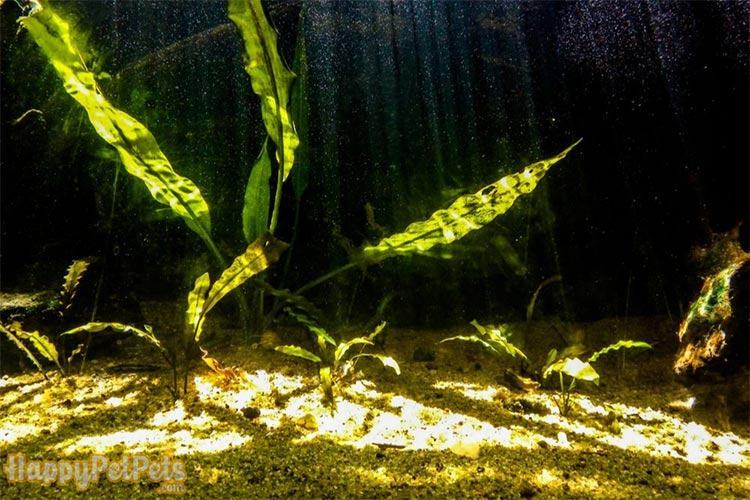
Direct sunlight can cause more harm to the saltwater fish tank
- Place a tank on a wide, firm, stable area. The tank should not shake if you pass by or put a gentle touch.
- Choose a weight-bearable place (if you live in the higher floor) for the tank since a saltwater aquarium is usually bigger and heavier than others.
- You can count the total weight of the tank by adding the empty tank, decoration, etc. and multiple of 4 (kilograms of water) with the tank gallons.
- That place should be near an outlet, faucet and drain to plug the equipment as well as easier for water changes.
- Don’t put the tank directly under the sunlight, the A.C or heat sources and the door.
- Leave a space (nearly 5 inches or more) behind or under the tank to set up other fish tank equipment.
Step 3: Add water and the salt water aquarium background
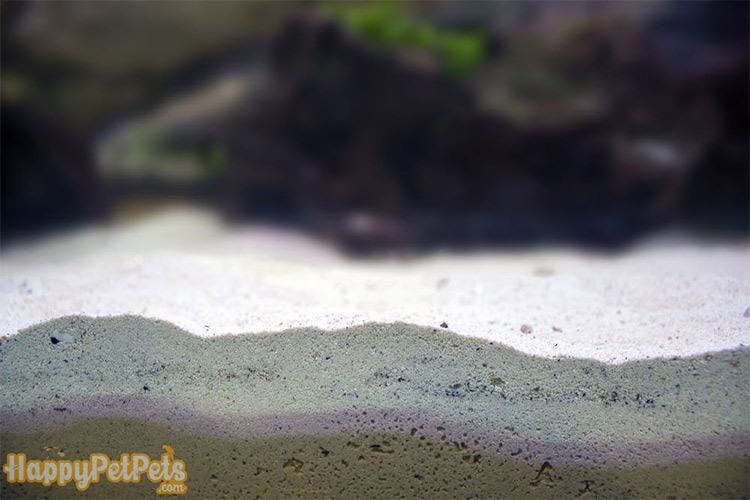
Make a sand bed layer with 2-3 inches height
- Use a sponge or cloth to wipe the tank. If you cannot get rid of the dirt, try again after soaking the tank in vinegar for a period (at least 30 minutes). You shouldn’t use the chemical cleaners since they can pollute the water and harm your fish.
- Pour sand in to make a 2-3 inches bed (adjust this bed thinner or thicker depends on the aquascaping), which helps to create a friendly environment for the fish.
- Prepare the salt mix water, or get mixed one available on the store and add it into the saltwater tank.
- Infuse the water to reach about one-third of the tank height, then use your hands to check outside the tank to see if there is a water leak. If no, continue to fulfill the aquarium. Otherwise, you should take out everything and return the fish tank to get a new quality one.
- Add the salt to get the required specific gravity. You can check with a hydrometer or refractometer. If the tank water gravity is too high, you should replace some saltwater with freshwater. In case the gravity is lower than needed, just add more salt into it.
- Place salt water aquarium heaters, powerheads, and sumps filter (or other types you have prepared). Leave it for 1-2 days.
- Later, check the gravity, and use a thermometer to find out whether the salt water aquarium temperature is fitting. If it hasn’t met the requirements yet, continue to modify the tank environment with salt or freshwater and heater. These tips for keeping the fish tank warm can also help if your heater is out of order.
- After the water is ready, you can set the live rock with the right proportion relates to the tank size to push the water cycle.
- Start checking the ammonia level in your saltwater fish tank with the ammonia test kits. You should know how to reduce the fish tank ammonia level to keep the nitrogen cycle working properly.
- Now it’s time for the decoration. Design your salt water background to own a beautiful aquarium.
Step 4: Get your fish ready for the new saltwater tank
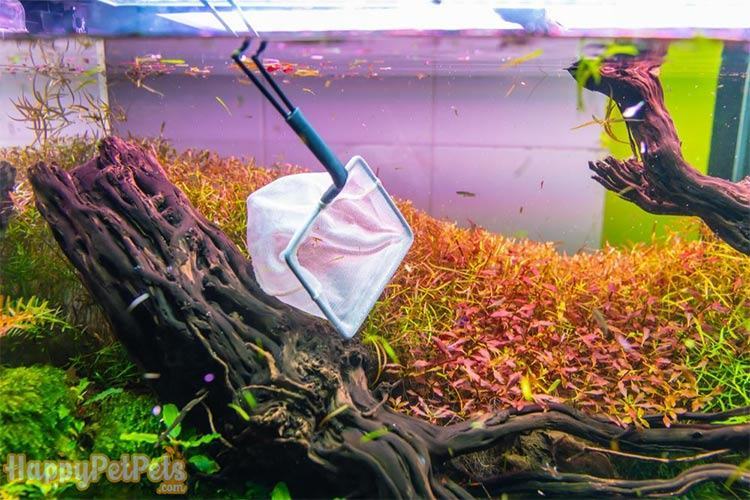
Gently transfer the fish from the bucket to your new saltwater tank
- After buying the new saltwater fish, you should prepare a time for fish to adapt to their new environment.
- Place a clean bucket lower than the tank then use a tube with a valve or you can tie some knots to control the water flow.
- Put one tube end in the tank at a 13-15 cm depth, and the other end in the bucket.
- Pour fish and some water in the bucket then start letting the water drop, when the water amount in the bucket is double than before, you can take out half of them and start dropping water one more time.
- After it has twice the water again, you should check the basic factors like temperature, specific gravity, and ammonia level. If the result is identical with the tank condition, you now can transfer the fish in, or else, continue the water dropping step.
- Move the fish in with a net carefully
Step 5: Keep the saltwater aquarium maintenance
- Feed the fish with several small feeding every day
- Add the protein skimmer and clean it once a day
- Make partial water change every week
- Clean the tank and decoration once every one or two month
- Replace the salt water fish tank lighting when needed
Conclusion
Marine life is attractive but also quite strange for many fish lovers to begin a new salt water fish tank. Regardless of that, you can easily have your own undersea space with this guide about how to start a saltwater tank, even if you are just a beginner.
A saltwater tank is not hard to set up. It just needs some different knowledge to maintain a great environment and fish growth. You can start your new saltwater tank right now.
And if you meet any problems, feel free to leave a comment or mail us, we will support you as fast as we can.
If you like this, don’t forget to react or share this post to your relative, we definitely can develop better thanks to your love.
FAQ about setting up a saltwater tank
Generally, you can feel more comfortable to go with the freshwater tank rather than the saltwater tank because the knowledge in freshwater raising is more popular than the other.
Actually, how to start a saltwater tank is as easy as a freshwater one. You just need to know the setup instruction like those below.
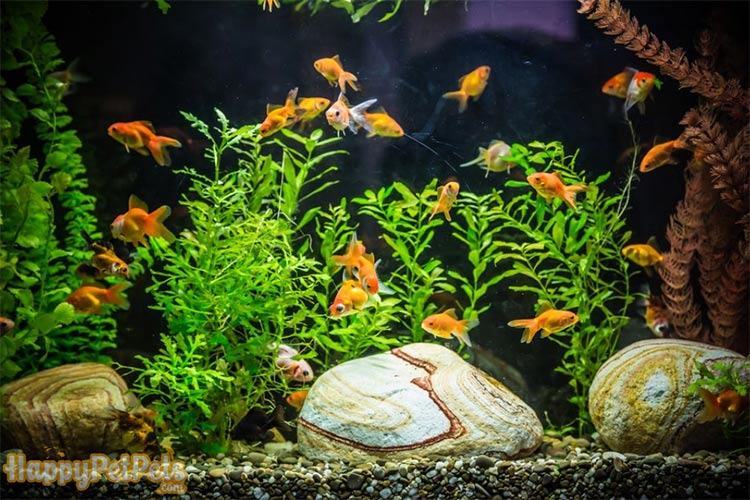
Freshwater vs. saltwater tank setup steps are not hugely different
There are four basic types of saltwater tank:
A tank with fish only
A tank with fish and live rock only
A reef tank: coral or nano type
A specific specialty fish tank
Live rock is naturally fragments of coral and rock under the sea. It can be considered as a home for beneficial bacterias and invertebrates.
In fact, you don’t need live rock for a saltwater tank. But you will want to have it since live rock can offer space, good microorganisms. It also can support the nitrogen cycle, be a biological filter as well as give your saltwater tank a better look
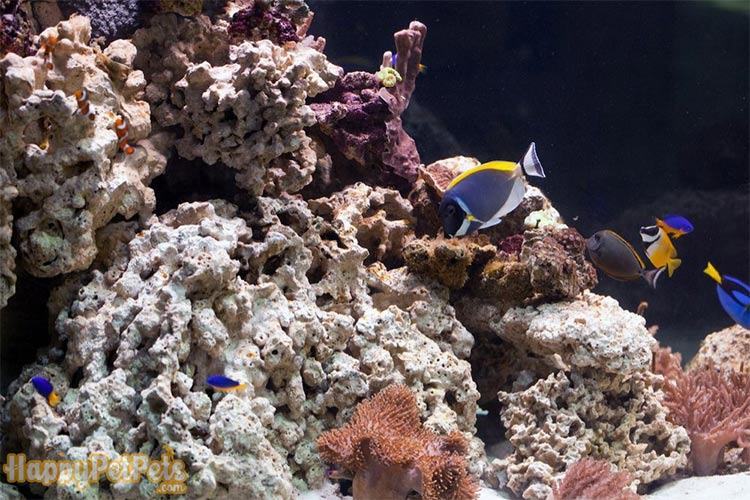
Live rock is an optional choice for upgrading the saltwater tank
You can add 1.5 pounds of live rock for 1 gallon of water. That is the proper proportion for you to start a new saltwater tank.
We don’t have the exact price for a saltwater aquarium setup, but its average is around 300-2000 dollars, according to Thumbtack research about saltwater tank cost.
These costs must include new saltwater fish, tank, equipment, decoration, and other maintaining solutions. It can increase due to your tank size and type of fish, but you can save more money by choosing the used one.
Related keywords: saltwater tank setup for beginners, starting a saltwater tank, starting a saltwater aquarium, starting a saltwater fish tank, how to start a saltwater aquarium, start saltwater aquarium, how to start saltwater aquarium, how to make a saltwater tank, setting up saltwater tank, how to setup a saltwater tank, what do i need to start a saltwater tank, how to set up saltwater tank, how to set up a saltwater aquarium, how to make a salt water tank
Similar Posts:https://happypetpets.com/category/aquariums-accessories/fish-tanks/
Source: https://happypetpets.com/

